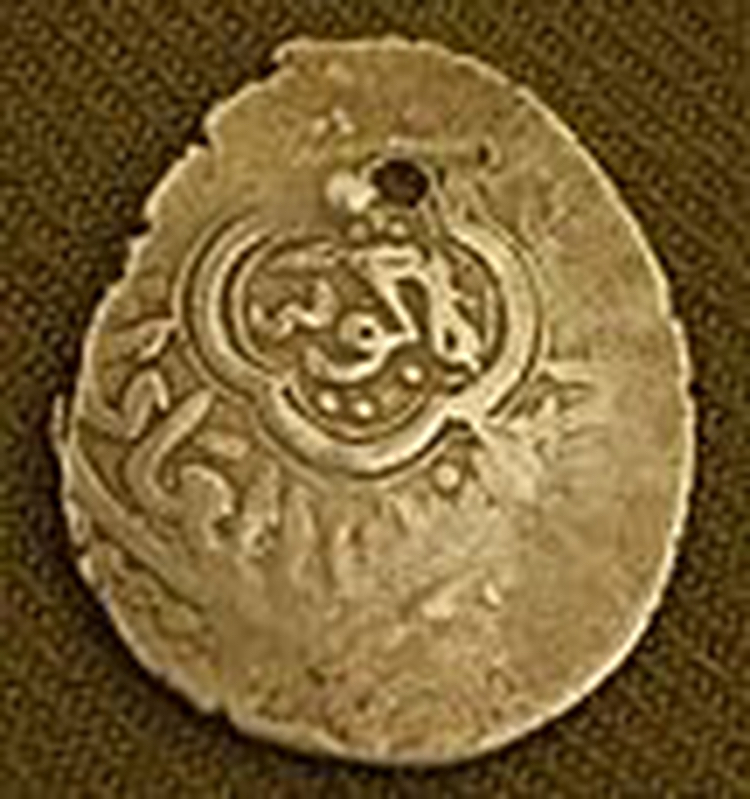The period of the Shirvanshahs
In the end of the 10-11 centuries, owing to the dissolution of Abbasid caliphate, rulers of some regions and countries, including Shirvanshahs, began governing independently; and soon after they gained power by right of succession.
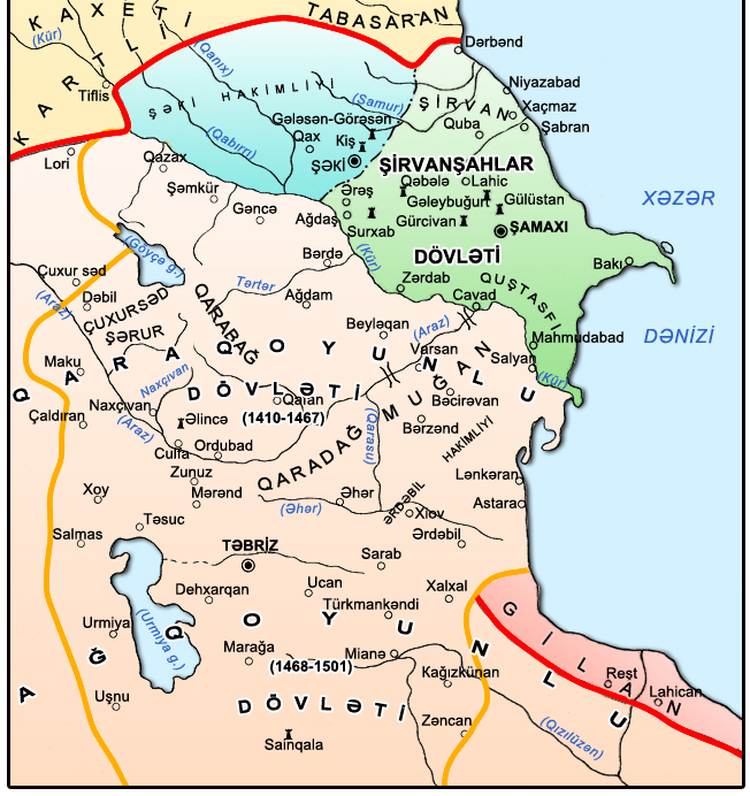
Foreign invaders had always fixed their eyes on rich towns of Shirvan- Shamakhi and especially, Baku, pillaged them and killed their residents. Sources report that in 421 Hegira/1030 a detachment of Ruses on board of 38 boats attacked Shirvan. Shirvanshah Minuchihr I ibn Yazid grappled with near Baku (Bakuya). Scores of Shirvan inhabitants were killed in action, including Ahmad ibn Hasskin, a representative of local nobility.
In 1066 head of Turks Kara-Tegin attacked Shirvan. He captured Shamakhi, then Baku. After the Kara-Tegin’s campaign, the penetration of Turks in Azerbaijan continued more intensively. In 1067 Seljuk Sultan Alp-Arslan arrived in Arran. In the east of Shirvan where Shirvanshahs ruled as vassals of Seljuks in the 11-12 centuries; and in the west of Shirvan – Arran Atabeks-Ildegizides ruled. Note that Ilsegizides were rulers of South Azerbaijan and vassals of Seljuk Sultans. Various sources report that in the second quarter of the 12 century, Ildegiz captured the whole of Shirvan, including Baku.
In the end of the 12 century, Shirvanshahs became nominally independent by actually subordinated to Ildegizides.
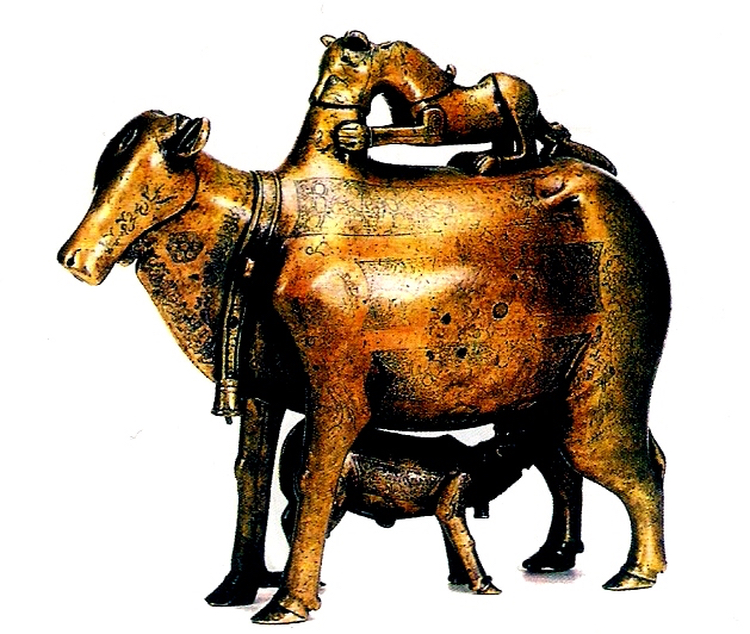
made by Ali Mahammad oglu Shirvani,
Shirvan, 1206, the Hermitage
In 1191, Shamakhi was terribly destroyed by earthquake, during which wife and children of Shirvanshah Ahsitan I died. Perhaps, in the reviewed period Ahsitan had to transfer his residence from Shamakhi to Baku. The end of the 12 and beginning of the 13 centuries were the period of feudal prosperity of Baku. Shirvanshahs decorated the town with fortifications. In the first half of the 12 century, they erected fortress walls and carried out fortification work. The system of defensive works of the town included Maiden’s Tower as well. At that time, the importance of Baku as one of the richest towns of Shirvan and a major port in the Caspian Sea increasingly rose. Sources described Baku as impregnable fortress and a large town of the Orient.
Later 12 century after death of Kyzyl Arslan, the state of Ildegizides fell into decay, owing to which Shirvanshahs as vassals of Ildegizides ceased recognizing their power and became independent, though for a short while. This was a period of growth and economic prosperity of Shirvan. However, this period of peace existence of the country did not last long.
Following the collapse of the Seljuk Empire, a threat of Mongol invasion impended over the countries of the East. Azerbaijan also failed to avoid the Mongolian conquest. According to Azerbaijani geographer of the earlier 15 century Bakuvi, Mongols could not for long take by assault the fortress near the sea – town of Baku. Only after the conquest of the whole country, the town had been forced to obey.

Istanbul Military Museum
Owing to the invasions of foreign conquerors in the 12-13 centuries, Shirvanshahs started erecting in Baku and Absheron fortress walls, towers and fortifications for defensive purposes on which names of Shirvanshahs and their titles were inscribed. All these are indicative of the independence of Shirvanshahs and big feudal lords.
Baku under Ilkhans was a place of wintering of Mongol rulers. In 1297 Gaza-khan, son of Ilkhan Argun, arrived in Baku and stationed there to winter.
It was Baku with its great economic importance that served as natural harbor. Trade ships from Iran and Central Asia preferred to use the Baku port.
In 1392/3, Timur appointed his son Miranshah a ruler of Shirvan and Baku, nevertheless, Sheikh Ibrahim managed to preserve his title of Shirvanshah even under Miranshah. In the end of 14 century silver and copper coins were minted on Timur behalf in Baku.
In 1413, Shirvanshah Ibrahim I recognized himself a vassal of Kara Yusuf. Baku, like other towns of Shirvan, fell under the power of the state of Kara Koyunlu. However, this vassalage was of formal nature. Son and successor to Ibrahim – Khalilullah I (1417-1465) declined to recognize his dependence upon Padishahs of Kara Koyunlu. Shirvanshah Khalilullah unfolded intensive building activity in the towns of Shirvan and especially in Baku which became the capital of Shirvan. Under Khalilullah, esemble of Shirvanshahs Palace, as well as caravanserais and bridges came to be erected.
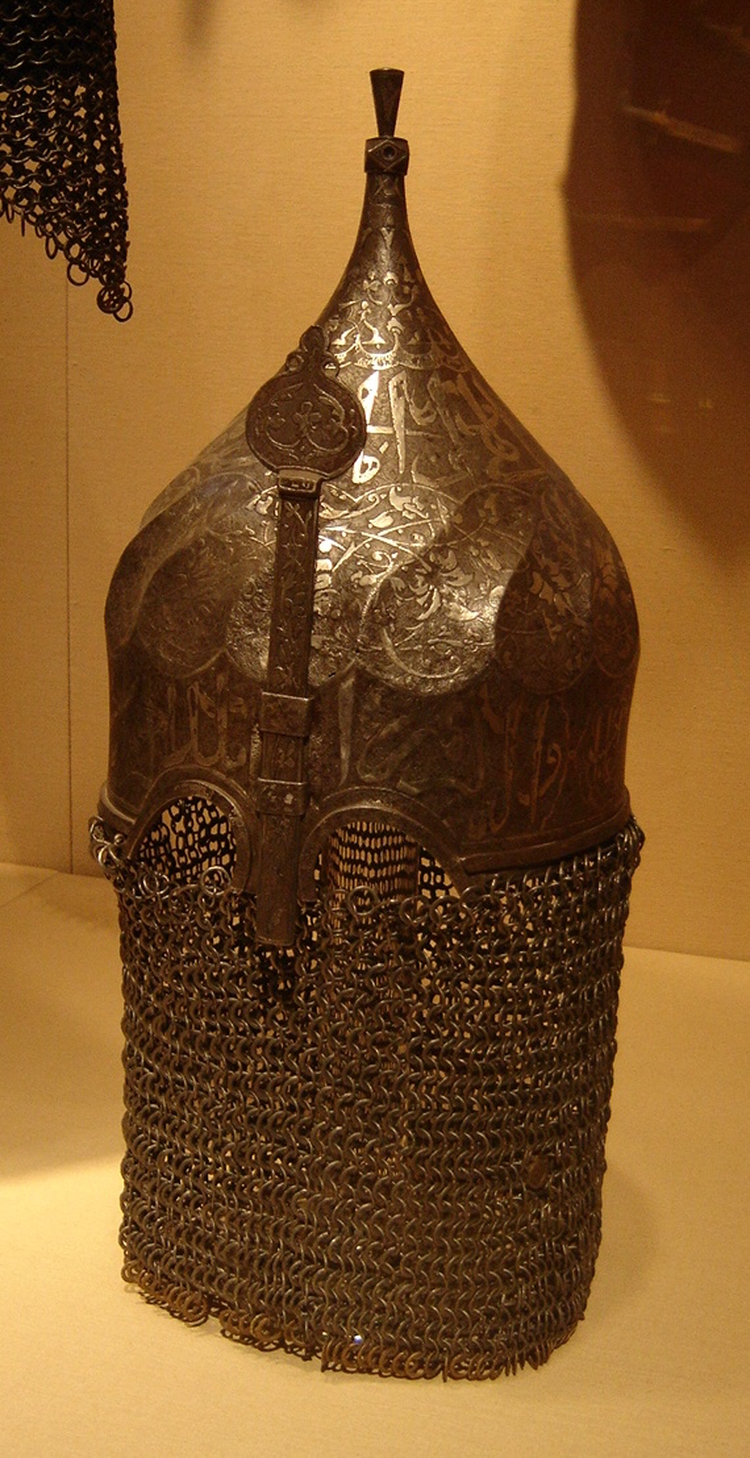
kept at the Metropolitan Museum of Art
in New York
The earliest coins minted by his son and successor Farruh Yasar are dated back from 1465. The peace existence of the state of Shirvanshah ended with disaster under Farruh Yasar when Sheikh Juneyd and his son Sheikh Heydar from the family of Safavids came out as conquerors and attacked Shirvan. Under Khalilullah I (1460), Sheikh Juneyd fell in action, and in 1488 the battle with Farruh Yasar Sheikh Heydar was killed.
In the 11-16 centuries, in Baku and in the Absheron area, there were the following developed occupations: handicrafts, stone-carvers, engravers, calligraphers, painters, weavers, she-carpet-weavers, jewelers, architects, builders, potters, coppersmiths, shipbuilders and handicraftsmen specializing in the production of various kinds of goods.
Ancient routes of international transit trade between the East and the West came across the Absheron peninsula of Azerbaijan.
Importance of Baku as major port was mentioned in an old Catalonian atlas compiled in 1375. It calls the Caspian as “Baku Sea” or “The sea of Sarra”.
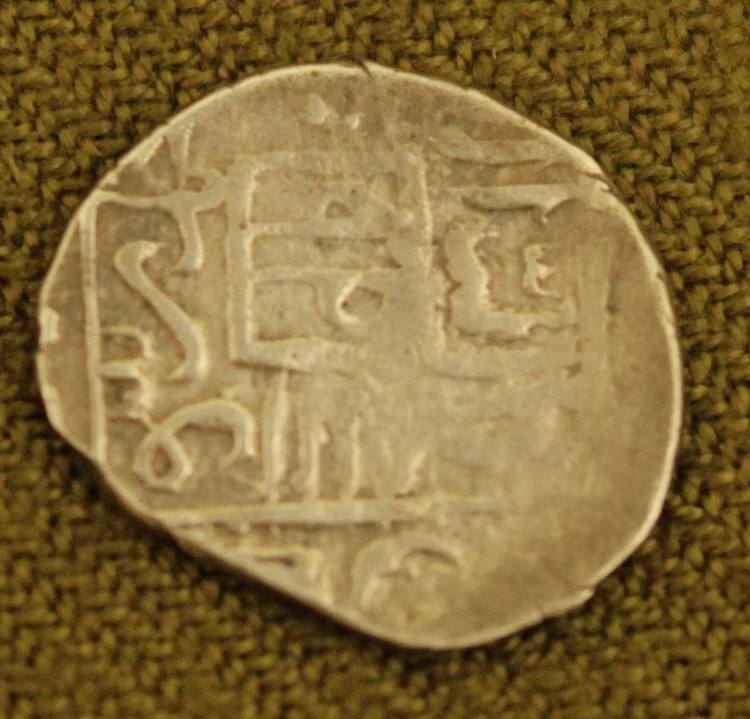
National Museum of History of Azerbaijan
The main export items from Baku were oil, silk, salt that were exported to North Iran, Central Asia and to Russia and Europe via Astrakhan.
Absheron country-houses, where majority of Baku residents spent their summertime, supplied markets of the capital with fig, pomegranate and grape, abundant in the gardens of the peninsula.
Shirvanshah in the feudal hierarchy was followed by emirs, whose names are mentioned in some constructions in the Baku Fortress and Absheron as a whole.
The second group of feudal lords consisted of supreme clergy – Sheikh-ul-Islam in the province: kadi and kadi al-kudat (kadi of kadis) in the principal town of the region. Muslim law based on Sharia was valid in Baku like in other Muslim states.
Coin minted during the reign of Khalilullah I.
National Museum of History of Azerbaijan
Imams of central mosque, mudarrises (medrese teachers), seyids and sheikhs of dervish cloisters, hanahs, zaviya, etc. as well as mutavalli of vakf, all belonged to the clergy.
Major merchants also belonged to the urban aristocracy and nobility.
An important role in the feudal community of town Baku played Rayis – chief. Rayises had different duties. Heads of various workshops and corporations, the elders of town blocks and chiefs of bazars were subordinated by and reported back to rayises. Rayises were representatives of guilds of merchants or the elders of handicraft workshops, which played an important role in the town’s public life.
The urban council consisted of town elders and rayises, who had relation to town management and reported to rayis ar-ruasa (rayis of rayises).
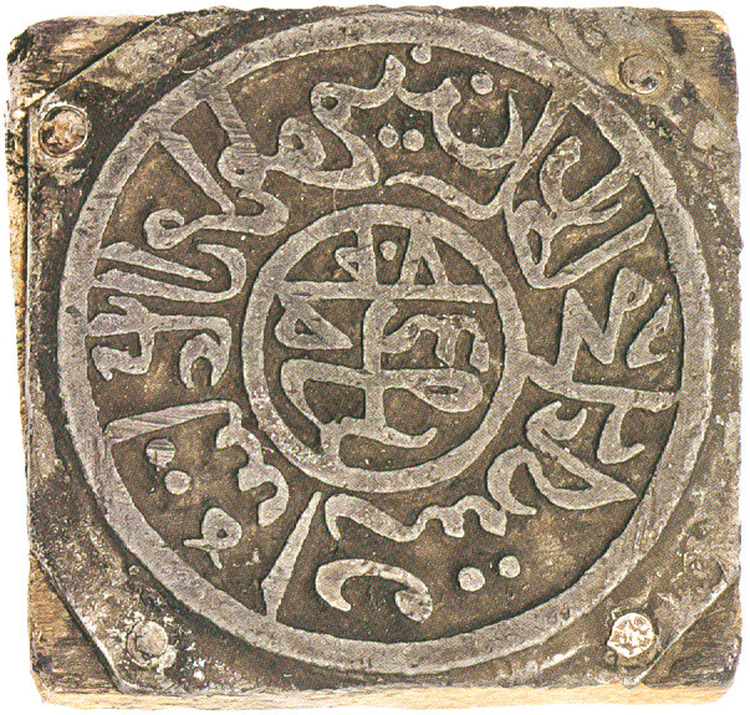
National Museum of History of Azerbaijan
In his work, A.K. Bakikhanov enumerates outstanding medieval scientists, who took origin from Shirvan and had outstanding scientific works, including Sheikh Abu-Abdullah Ali ibn Mohammad Bakuvi (948-1050), also known as Mohammad Ali Bakuvi. His works consist of an almanac of Hadith, an almanac about Sufis’s life, Ahbar al-arifin, Ahbar al-gafilin and an almanac of verses and aphorisms.
At the boundary of 14-15 centuries, extreme-wing Shiite sect of Hurufits – Hurufiya is the Arabic plural from Huruf from Harf (a letter, letters) – spread widely throughout the Near East and Central Asia. The founder of this sect was Fazallakh Naimi Astrabadi, who had been exiled by Timur and since 1386 lived long in Baku and Shirvan. At the end of the 14 century, Baku was a place from where the Hurufits teaching was spread over the entire Near and Middle East. After the death of Fazallakh Naimi, Imadaddin Nasimi (1369-1417) became the most outstanding leader of the sect of Hurufits.
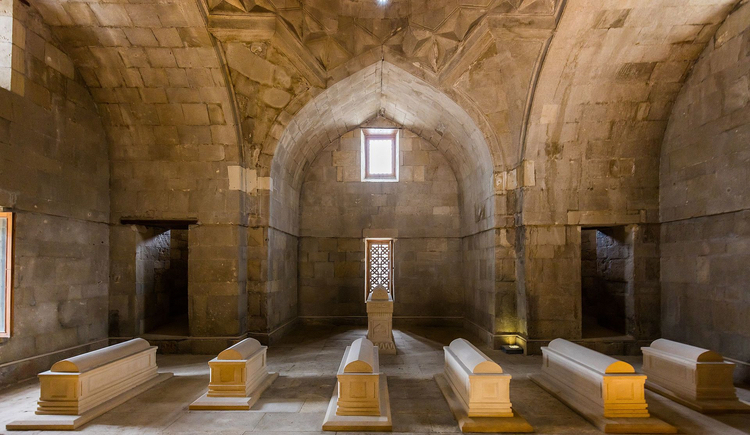
Baku. Icherisheher
Philosophy and science development in Shirvan was traced in the 14-15 centuries, too. A.K. Bakikhanov calls the names of the outstanding Baku natives scholars of that period. One of them is Abu-Sayyad-Abdullah Bakuyi, who lived in the 14 century, a dervish of whom Mohammad ibn Mahmud wrote in his book under the name of “Nafais al-funun”.
One of remarkable medieval scholars in Azerbaijan at the end of the 14 century-early 15 century was Baku native Abd ar-Rasheed ibn Salih ibn Nuri, who is known under his surname of Bakuvi. The only geographic work by this author, which is kept nowadays, is in Arabic – Talhis al-Asar va adja’ib al-Malik al-kahhar (The Abridgement of “Monuments” and Miracles of Mighty King) was written in 806. In different, countries there are series of lists of this work and manuscripts with translation into Persian. One of the Arabic manuscripts (rewritten in 1614), which currently is stored at the National Library of Paris as item №5299, was translated into French in 1789 and publicized by de Gin.

One of the most prominent medieval scholars and philosophers was Sayyed Yahya ibn as-Sayyed Baha ad-Din ash-Shirvani as-Shamakhi al-Bakuvi, a Khanifit, Sufi al-khalvati, who was known in the Near East and in the Middle East and lived in Baku in the 15 century, at the Khalilullah’s court. Sayyed Yahya wrote a series of works of Sufi-mystical nature.
The preserved fortress monuments, which date back to the 13-14 centuries and later centuries, testify that there were mollakhane, e.g. spiritual schools and divine schools, which taught mostly to divine and philosophical subjects and the Moslem law, in the reviewed period of Baku.
In later 14-early 15 centuries, Baku residents talked in the Turkic language – the language that was spoken by the great Azerbaijani poet Nasimi Badr Shirvani and by others.
The period from early 12 century to the 1220s was the Baku’s first flourishing period. The 15 century is the period of flourishing of urban culture when Baku became the capital of the Shirvanshah State, one of the most feudal formations on the territory of Azerbaijan.

